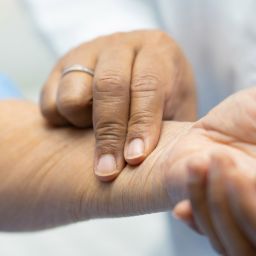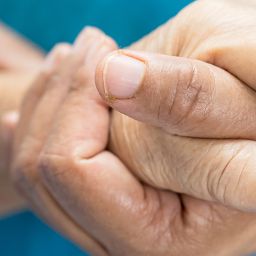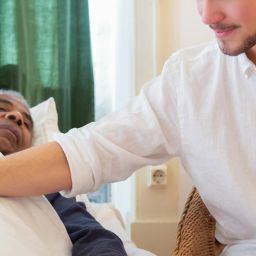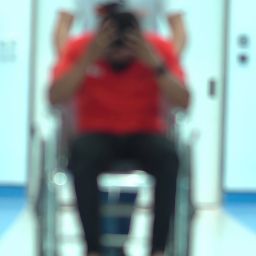Opioid addiction has become a critical public health crisis, impacting millions of individuals and families around the globe. The overwhelming nature of opioid addiction can leave many feeling hopeless when it comes to finding effective treatments. The challenges associated with withdrawal symptoms, cravings, and the risk of relapse make this addiction difficult to overcome without professional support. However, one promising solution that has been helping countless individuals on their road to recovery is Medication-Assisted Treatment (MAT). This approach has proven to be a highly effective and comprehensive method of addressing opioid addiction.
But what exactly is medication-assisted treatment (MAT), and why is it regarded as a gold standard in opioid treatment? MAT is not just a traditional approach to addiction; it combines the use of FDA-approved medications with counseling and behavioral therapies to provide a holistic treatment plan. This combination tackles the physical, emotional, and psychological components of addiction, offering individuals a better chance of long-term recovery.
In this article, we will throw light on 10 key benefits of medication-assisted treatment (MAT) and how it supports individuals in their journey to overcome opioid addiction. By developing a clearer understanding of how medication-assisted treatment (MAT) functions and why it is preferred by medical experts, you will recognize that it provides a more successful, research-supported method for opioid treatment, empowering individuals to take back control of their lives.
What Medications Are Used in MAT?
In medication-assisted treatment (MAT), several medications are utilized to help individuals manage and overcome opioid addiction. The three most commonly used medications in opioid treatment are Methadone, Buprenorphine, and Naltrexone. Each of these medications plays a critical role in stabilizing patients by addressing the chemical imbalances in the brain caused by opioid misuse.
Methadone is a long-acting opioid agonist that works by reducing cravings and withdrawal symptoms without producing the euphoric effects associated with opioid use. Buprenorphine, another key medication in MAT, is a partial opioid agonist, meaning it activates the opioid receptors in the brain to a lesser degree, helping to ease cravings and withdrawal while also blocking other opioids from having their full effect. Lastly, Naltrexone works as an opioid antagonist, preventing opioids from binding to their receptors, effectively blocking any euphoric or sedative effects if opioids are used during treatment.
By using these medications, medication-assisted treatment helps individuals maintain stability and control over their recovery, allowing them to focus on the behavioral and psychological aspects of overcoming opioid addiction.
Medication-Assisted Treatment (MAT) vs Traditional Treatments
Unlike traditional abstinence-only approaches, which focus solely on eliminating drug use without addressing the underlying physical and psychological aspects of opioid addiction, medication-assisted treatment (MAT) takes a more comprehensive view of addiction as a chronic disease. This understanding leads to a more balanced and effective treatment strategy, combining medication with counseling and behavioral therapies. MAT helps individuals manage withdrawal symptoms, reduce cravings, and stabilize their lives, which makes it easier for them to engage in the counseling and support needed for long-term recovery. In contrast to the often rigid, one-size-fits-all approach of traditional treatments, opioid treatment with MAT offers a more flexible and individualized plan, improving the odds of sustained recovery by addressing both the physical dependence and the behavioral changes needed to overcome addiction. By recognizing that recovery is a gradual process, MAT enhances a person’s ability to function normally in day-to-day life, which ultimately increases the chances of long-term success.
The Role of Medications in MAT
How Medications Help with Withdrawal Symptoms
Withdrawal symptoms from opioids can be incredibly intense and often unbearable, making it one of the most significant barriers to recovery. These symptoms can include nausea, sweating, anxiety, insomnia, and severe cravings, which can drive individuals back to drug use just to find relief. Medication-assisted treatment (MAT) plays a vital role in easing these symptoms by using medications like Methadone, Buprenorphine, and Naltrexone. These medications work to stabilize the brain’s chemistry and allow the body to function more normally, without the extreme highs and lows caused by opioids. By reducing the severity of withdrawal symptoms, MAT enables individuals to focus on the emotional and behavioral aspects of their recovery, increasing their ability to stay committed to long-term sobriety. This makes the treatment process more manageable, allowing people to gradually reintegrate into their daily lives without being overwhelmed by physical discomfort.
Preventing Relapse
One of the most daunting challenges in opioid addiction treatment is the high risk of relapse, which can set individuals back after making significant progress. The intense cravings for opioids, paired with the fear of withdrawal symptoms, often make relapse a constant threat. However, medication-assisted treatment (MAT) addresses these concerns by providing medications that reduce cravings and manage withdrawal symptoms. By alleviating these physiological triggers, MAT gives individuals a more stable foundation for recovery. This allows them to focus on developing healthier coping mechanisms and making long-term lifestyle changes. Additionally, medications used in MAT, such as Naltrexone, can prevent the euphoric effects of opioids in case someone relapses, acting as a protective measure and lowering the chances of the addiction fully resurfacing. This creates a safety net for individuals, helping to break the cycle of relapse and offering them a greater chance of maintaining sobriety over time.
Benefits of MAT for Opioid Addiction
Let’s dive deeper into the specific benefits of Medication-Assisted Treatment:
Benefit 1: Reduced Cravings
One of the most significant advantages of medication-assisted treatment (MAT) is its ability to reduce opioid cravings. The medications used in MAT work by interacting with the same brain receptors as opioids, but without producing the euphoric high. This reduction in cravings is vital for patients to focus on rebuilding their lives without the constant struggle to resist opioids. By diminishing the mental obsession with using, individuals can better engage in therapy and other recovery efforts. Ultimately, this helps reduce the chances of relapse and allows patients to regain control over their daily routines.
Benefit 2: Managing Withdrawal Symptoms
Opioid withdrawal can be physically painful and mentally overwhelming. MAT provides relief by managing withdrawal symptoms, allowing individuals to experience a smoother recovery journey. It’s not a magic pill, but it certainly makes the transition to sobriety less daunting. Patients can function more normally during treatment, without the severe discomfort that often drives people back to drug use. This level of stability enables them to participate more fully in therapy, work, and family life while staying committed to their recovery goals.
Benefit 3: Improved Retention in Treatment
Research has shown that individuals receiving MAT are more likely to stay in treatment longer than those who pursue non-medicated options. By alleviating the discomfort of withdrawal and reducing cravings, MAT helps people feel stable enough to commit to their recovery for the long term. Longer retention in treatment directly correlates with better outcomes, as it allows more time to develop the necessary skills and coping mechanisms for long-term sobriety. Patients who remain in treatment longer are also better able to address the underlying emotional and behavioral issues that contribute to their opioid addiction.
Benefit 4: Lower Risk of Relapse
Opioid addiction is a chronic condition with a high relapse rate. MAT greatly lowers the likelihood of relapse by managing cravings and withdrawal symptoms effectively. When individuals feel stable both physically and mentally, they are less inclined to revert to opioid use. Additionally, the medications in MAT, like Naltrexone, can block the effects of opioids if a person does relapse, further lowering the risk of returning to full-blown addiction. This safety net empowers individuals to focus on recovery without the constant fear of falling back into old habits.
Benefit 5: Increased Safety
A key advantage of MAT is its ability to lower the risk of overdose. By stabilizing the body’s response to opioids, medications like Methadone and Buprenorphine lower the risk of overdose in people who may otherwise return to opioid use. The regulated dosing of these medications prevents the dangerous fluctuations in opioid levels that can lead to accidental overdose. Additionally, MAT provides a controlled environment for tapering off opioids, reducing the likelihood of risky behaviors such as illicit drug use or unregulated self-medication.
Benefit 6: Enhanced Overall Health
MAT doesn’t just help people break free from opioid addiction—it also contributes to improved physical and mental health. By supporting recovery, patients can rebuild their lives, repair relationships, and focus on healthier habits. As individuals stabilize and abstain from opioids, they often experience improvements in cardiovascular health, mental clarity, and emotional well-being. This improved overall health can also lower the risk of chronic diseases that are often exacerbated by long-term drug use, such as liver damage and infections.
Benefit 7: Customized, Holistic Care
MAT works best when it’s paired with counseling and therapy, creating a holistic treatment plan that addresses the emotional, social, and behavioral aspects of addiction. This all-encompassing strategy increases the chances of lasting recovery. The combination of medication and therapy allows for personalized treatment, tailored to the individual’s unique needs and challenges. Holistic care recognizes that recovery isn’t just about stopping drug use; it’s about healing the whole person—mentally, physically, and emotionally.
Benefit 8: Social Reintegration
Successful recovery involves more than just quitting drugs. MAT helps individuals reintegrate into society, rebuild relationships, and regain trust with family, friends, and colleagues. It helps people return to work and lead more productive lives. As patients begin to stabilize, they can focus on rebuilding their social networks and creating positive connections, which are crucial for long-term recovery. This reintegration helps to restore self-esteem and gives individuals a sense of purpose and belonging in their communities.
Benefit 9: Economic Benefits
While addiction treatment can seem expensive, MAT is a cost-effective solution in the long run. By reducing hospital visits, legal issues, and ongoing health complications associated with addiction, MAT can save individuals and the healthcare system a lot of money. When people remain stable and engaged in treatment, they are less likely to engage in costly, high-risk behaviors like illicit drug use, which can lead to criminal charges or medical emergencies. Furthermore, MAT reduces the financial strain on families and employers, as individuals can return to work and contribute positively to the economy.
Benefit 10: Evidence-Based Approach
MAT is not some trendy treatment—it is backed by extensive research and clinical evidence. The scientifically proven effectiveness of MAT makes it a reliable choice for those seeking a path to recovery from opioid addiction. With numerous studies showing its success in reducing relapse rates, improving retention in treatment, and enhancing overall health, MAT stands out as one of the most effective treatments available. This evidence-based approach gives patients and healthcare providers confidence in its ability to deliver long-lasting results.
MAT in Different Settings
Medication-assisted treatment (MAT) is provided in various settings, including outpatient clinics, inpatient rehabilitation centers, and even primary care offices. The flexibility of where and how MAT can be administered makes it accessible to more people, whether they are dealing with mild or severe opioid addiction. This versatility ensures that patients can receive the treatment they need without disrupting their daily lives. For individuals with busy schedules or those who prefer less intensive programs, outpatient opioid treatment offers an effective solution. Moreover, being available in primary care offices reduces the stigma associated with specialized treatment centers, encouraging more people to seek help.
Challenges of MAT
Although MAT is highly effective, it still faces stigma and misconceptions. Many people mistakenly believe that MAT is just “replacing one drug with another,” not recognizing that it is an evidence-based approach to treating opioid addiction. In reality, MAT is a critical part of a medical treatment plan that helps individuals regain control over their lives by managing cravings and withdrawal symptoms. Despite these misconceptions, MAT has been shown to improve treatment retention and reduce the risk of relapse, making it an essential tool in opioid treatment. Educating the public about the benefits of MAT is crucial to breaking down these barriers and encouraging more individuals to seek help.
Seeking Professional Help?
If you or a loved one are struggling with opioid addiction and need guidance or support with Medication-Assisted Treatment (MAT), don’t hesitate to reach out to us. Our compassionate team is here to help you navigate your recovery journey and provide the resources you need to regain control of your life. Contact us today to take the first step toward a healthier future.
Conclusion
Medication-assisted treatment (MAT) offers a lifeline to those struggling with opioid addiction. By combining medications with counseling and behavioral therapies, MAT addresses the physical, mental, and emotional aspects of addiction. This comprehensive approach not only helps stabilize patients but also provides them with the tools needed for long-term recovery. The effectiveness of MAT in reducing cravings, managing withdrawal symptoms, and preventing relapse makes it a preferred method of opioid treatment by healthcare professionals. By focusing on the whole person, MAT provides a balanced, evidence-based solution for those ready to rebuild their lives.
















